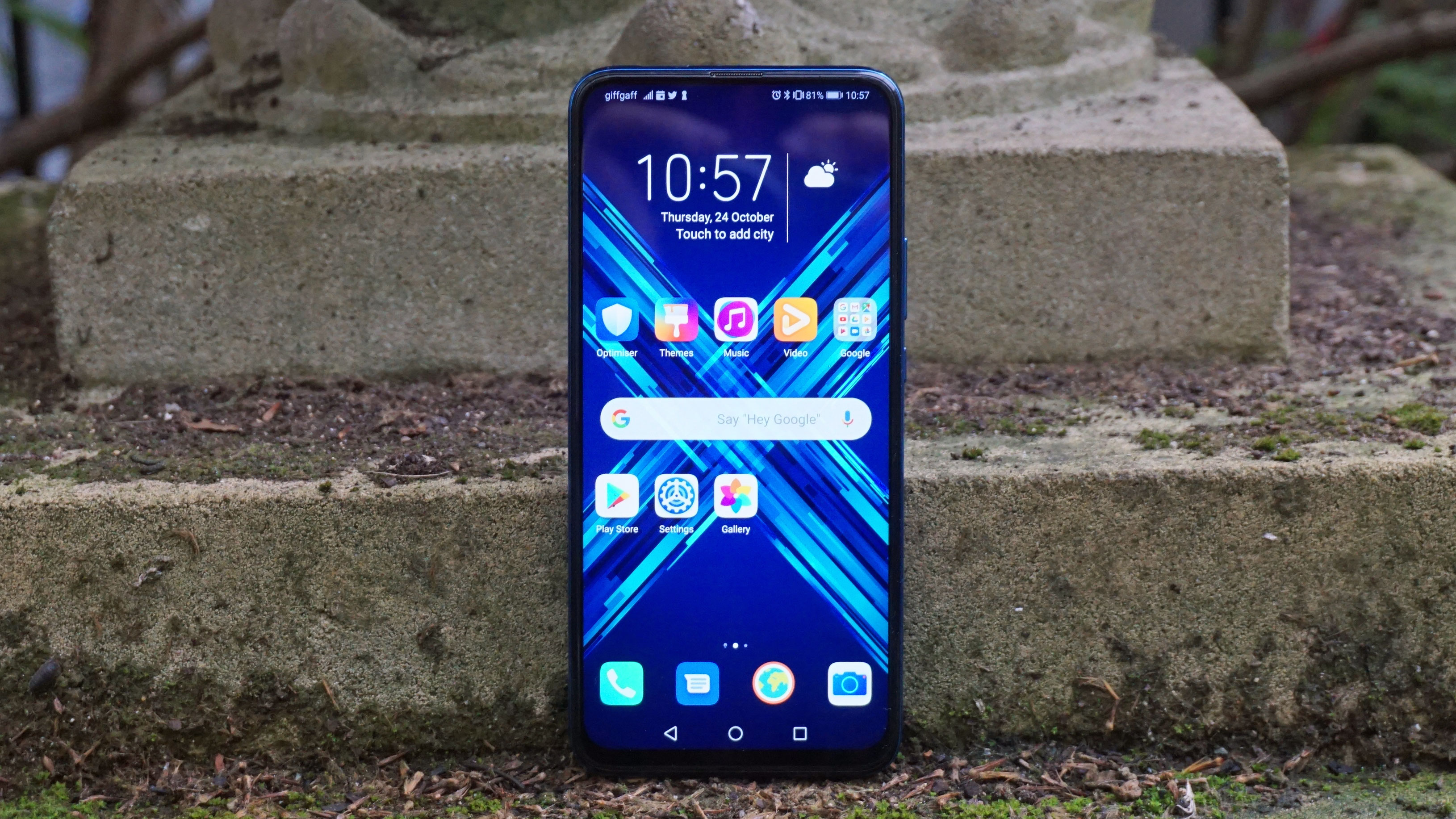Why you can trust TechRadar
Interface and reliability
The Honor 9X runs Android 9, which isn’t the latest version of Google’s operating system, but most smartphones aren’t eligible to upgrade yet. Laid over the top of this is EMUI, Huawei’s own user interface, which has its good and bad points.
Colors are bold in EMUI, with icons that are all different vibrant colors (some would call them garish). The default background is a rather subtle blue, as opposed to the Huawei P30 (which also has EMUI) which had a bright wallpaper. As a result the phone doesn’t seem too lurid to look at, but it’s still a far shout from ‘restrained’.
Many Chinese smartphone manufacturers pack their UIs full of bloatware, and while some of them like Oppo have quickly learnt that this doesn’t go down well with Western phone users, Huawei is not one of those brands, so the Honor 9X comes with loads of preloaded apps which feel rather useless. There’s Huawei Health, which is only really useful if you have a Huawei or Honor wearable (although its step counter is okay), HiCare, which is basically just a support app for the phone, and Honor Store, which lets you buy Honor products, including phones. These are all useful apps for some people, but they don’t feel vital enough to come pre-installed on the phone.

Generally the Honor 9X is fine to use, and we didn’t have any trouble making or receiving calls, connecting to the internet, or accessing our mobile data. The GPS did feel a little inaccurate, and Bluetooth dropped occasionally, but neither of these problems were frequent enough for us to consider them a major issue with the device.
Movies, music and gaming
The viewing experience on a smartphone is always linked to the screen quality, and because of the Honor 9X’s LCD screen, movies and TV shows look simply okay. The high resolution is apparent, with picture quality looking pretty good, but the colors are a little flatter than we’d like. Not all smartphones at this price have as big a screen as the 9X, though, so you could certainly do a lot worse if you like to watch content on the go.
The Honor 9X has a mono down-firing speaker, which is easy to cover up with your hand if you’re holding the handset for gaming or watching content. Saying that, audio quality isn’t great, with notable distortion at higher volumes and not too much bass to speak of, so you may want to stick with headphones.
There is a 3.5mm headphone jack on the Honor 9X, so if you’re a fan of wired headphones, this is one of the few handsets that still has the port. While many companies have been dropping 3.5mm jacks, Huawei still has a decent number of phones that still use it, such as this device.
Sign up for breaking news, reviews, opinion, top tech deals, and more.
If you’re a big fan of smartphone gaming, you’ll find the Honor 9X okay but not great, and this is probably down to the mid-range chipset (which we’ll get into in the next section).

The Honor 9X ran all the high-end games we tested, like Call of Duty Mobile or PUBG, but it didn’t always provide quite as good an experience as other devices. For example, PUBG defaulted the graphics to the medium setting, which is pretty rare when most mid-rangers easily reach the high mark. When playing online matches of Call of Duty Mobile, we experienced frequent frame rate problems.
Less demanding games were fine to play, with the likes of Crazy Taxi and Alto’s Odyssey playing just as well as they would on any other phone, so if you don’t plan on playing the most intensive games, the Honor 9X will be fine.
Performance and benchmarks
The Honor 9X has a Kirin 710F chipset – that’s a decent mid-ranger, a boosted version of the Kirin 710 that we’ve seen in a few phones now like the Honor 8X, Honor 20 Lite and Huawei P30 Lite. That means its performance isn’t wildly different to last year’s Honor X device, a point that’s proven by benchmark scores.
When we put the phone through a benchmark test on Geekbench 4, it returned a multi-core score of 5,246, which is actually lower than the 5,552 we got for the Honor 8X. On Geekbench 5, we got a score of 1,264, and while Geekbench 5 is so new that we haven’t tested many phones on it, that’s still the lowest score we’ve seen.
However, its Geekbench 4 score is far from the lowest we’ve seen in 2019, and in general the phone doesn’t feel too slow to use, as scrolling through the camera app, which can usually be a telling indicator of performance speeds, feels pretty fast.

Tom Bedford joined TechRadar in early 2019 as a staff writer, and left the team as deputy phones editor in late 2022 to work for entertainment site (and TR sister-site) What To Watch. He continues to contribute on a freelance basis for several sections including phones, audio and fitness.
